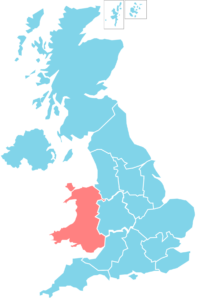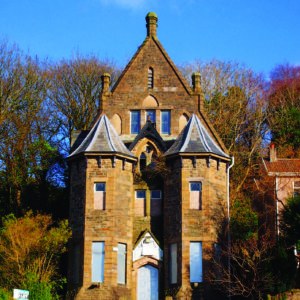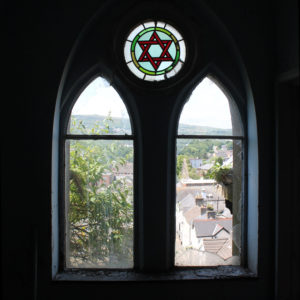 The first recorded Jews came to Wales in the late thirteenth century to where Edward I was building his ‘iron ring’ of castles. When they were expelled, they eventually returned to some of those places where they had once settled. In the nineteenth and early twentieth centuries, communities were established along the north Wales coast in Bangor, Colwyn Bay, Llandudno, Rhyl and Wrexham. By 1918 the Jewish population of Wales had reached around 6,000 people.
The first recorded Jews came to Wales in the late thirteenth century to where Edward I was building his ‘iron ring’ of castles. When they were expelled, they eventually returned to some of those places where they had once settled. In the nineteenth and early twentieth centuries, communities were established along the north Wales coast in Bangor, Colwyn Bay, Llandudno, Rhyl and Wrexham. By 1918 the Jewish population of Wales had reached around 6,000 people.
 In the 1940s, so many Jewish workers had flocked to support the war effort that the predominant languages heard on Treforest Industrial Estate, Rhondda Cynon Taff, were Polish, German and Czech. Jewish businesses in Pontypridd became so successful that the town’s high street was colloquially known as “Jewish Street”.
In the 1940s, so many Jewish workers had flocked to support the war effort that the predominant languages heard on Treforest Industrial Estate, Rhondda Cynon Taff, were Polish, German and Czech. Jewish businesses in Pontypridd became so successful that the town’s high street was colloquially known as “Jewish Street”.

In 1848, Merthyr became the first place to boast an established synagogue in the south Wales valleys. By 1939, there were 175, in 1959, there were just 40 and in 1999, George Black “the last Jew in Merthyr”, died aged 82. At one time every Valley community had their Jewish congregants. Newport, Swansea and Cardiff are the only ones remaining. Newport is small, Swansea is getting smaller, Cardiff is the biggest.
The synagogue in Newport dates back to 1859. In the 1970s, there were about 150 members, but numbers dwindled and now just six remain.
 The Foundation for Jewish Heritage bought the former Merthyr Tydfil synagogue.The synagogue was last used in 2006 and has since lain empty and in a deteriorating state.They heyday of Merthyr’s Jewish community was in the early 1900s when the town’s Jewish population numbered around 400 people. There was a lively communal life that included a Literary and Social Society and a Cycling Club.
The Foundation for Jewish Heritage bought the former Merthyr Tydfil synagogue.The synagogue was last used in 2006 and has since lain empty and in a deteriorating state.They heyday of Merthyr’s Jewish community was in the early 1900s when the town’s Jewish population numbered around 400 people. There was a lively communal life that included a Literary and Social Society and a Cycling Club.
In 1968, there were two Orthodox synagogues, a Reform congregation and a thriving Jewish community in Cardiff. At the time the Jewish population numbered approximately 3,500. By the mid 1990s, the number had fallen to 1,200. The 2001 British census found 941 Jews by religion in Cardiff.